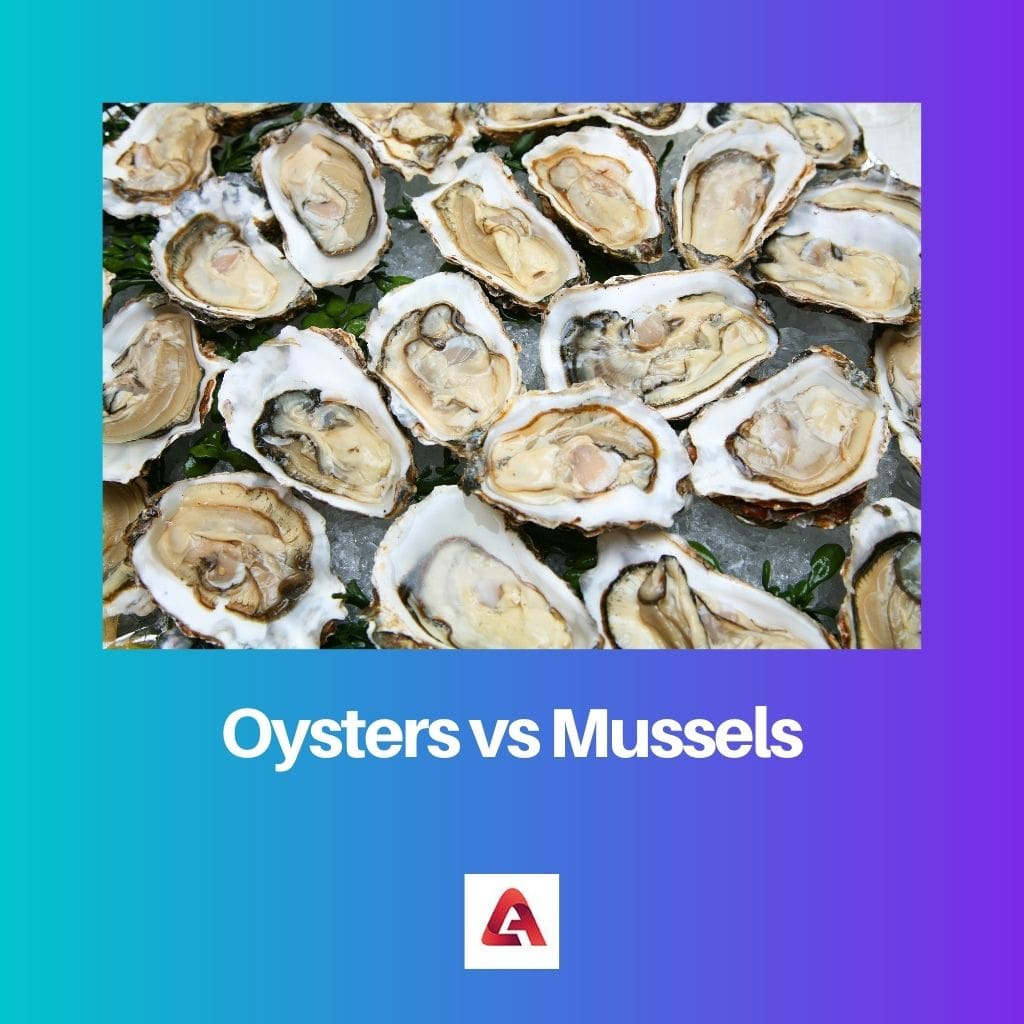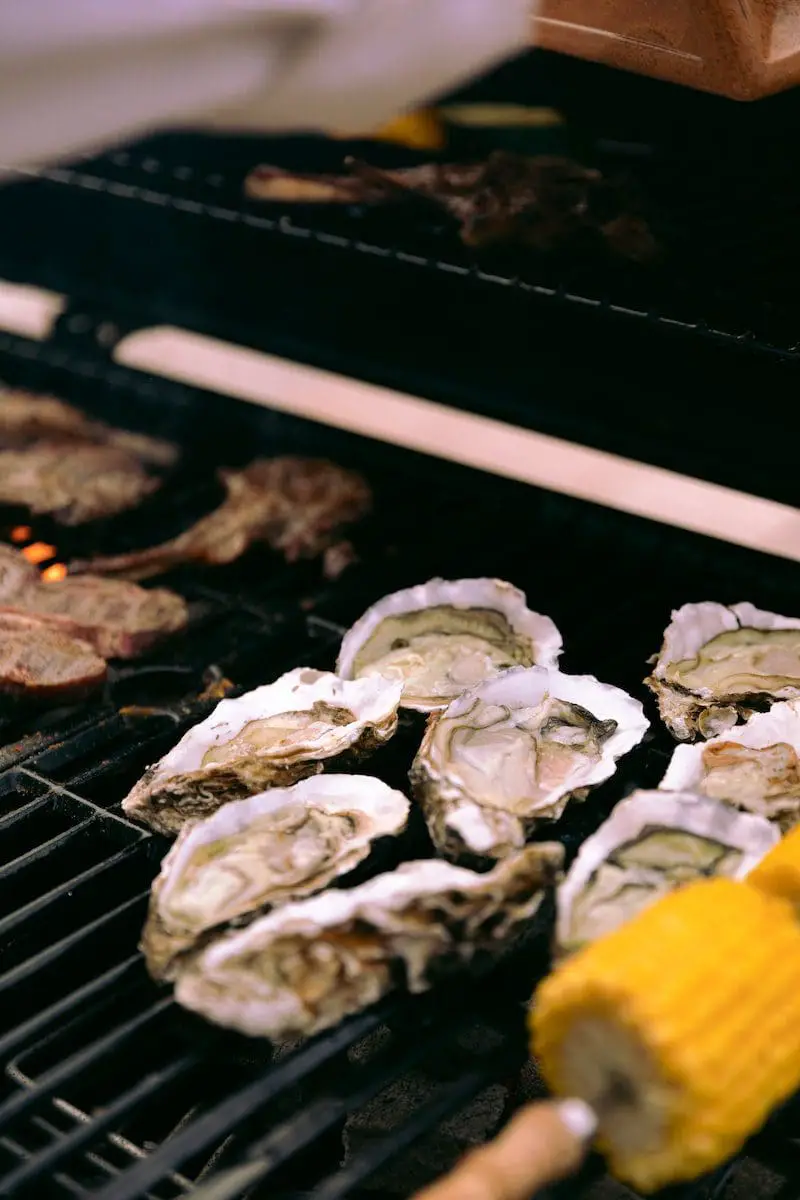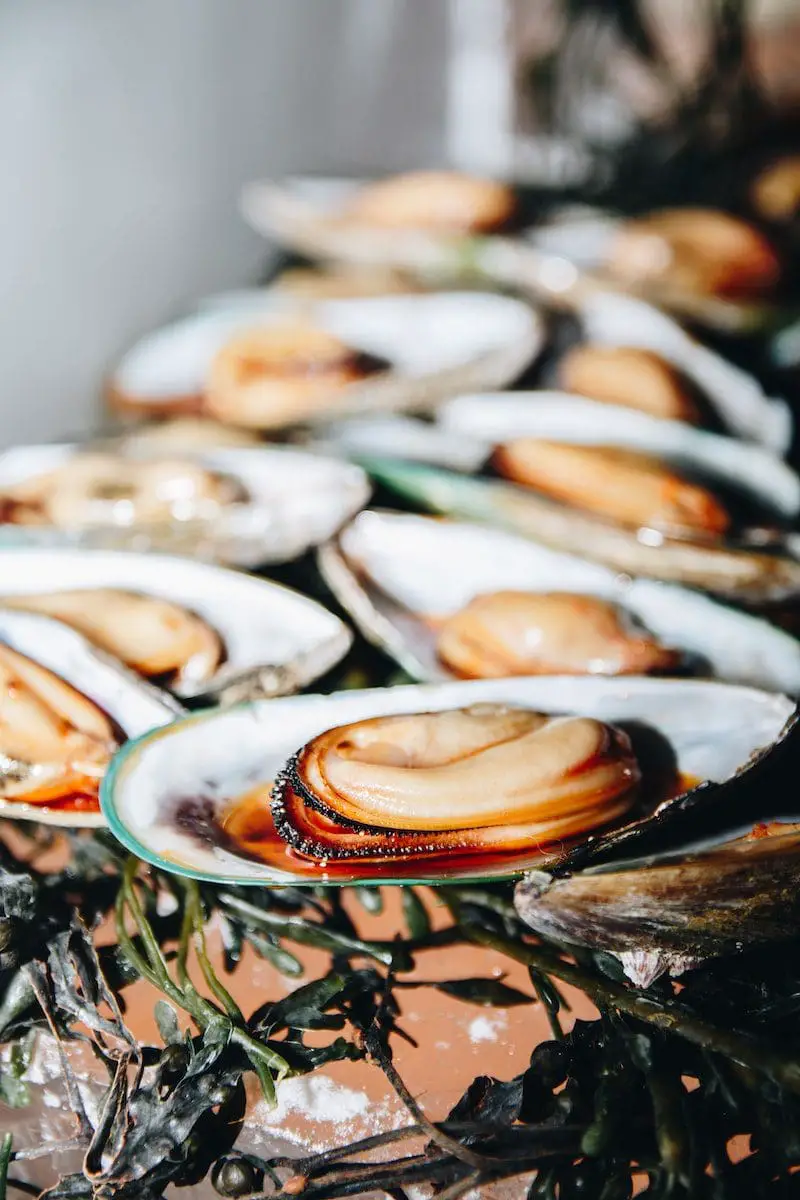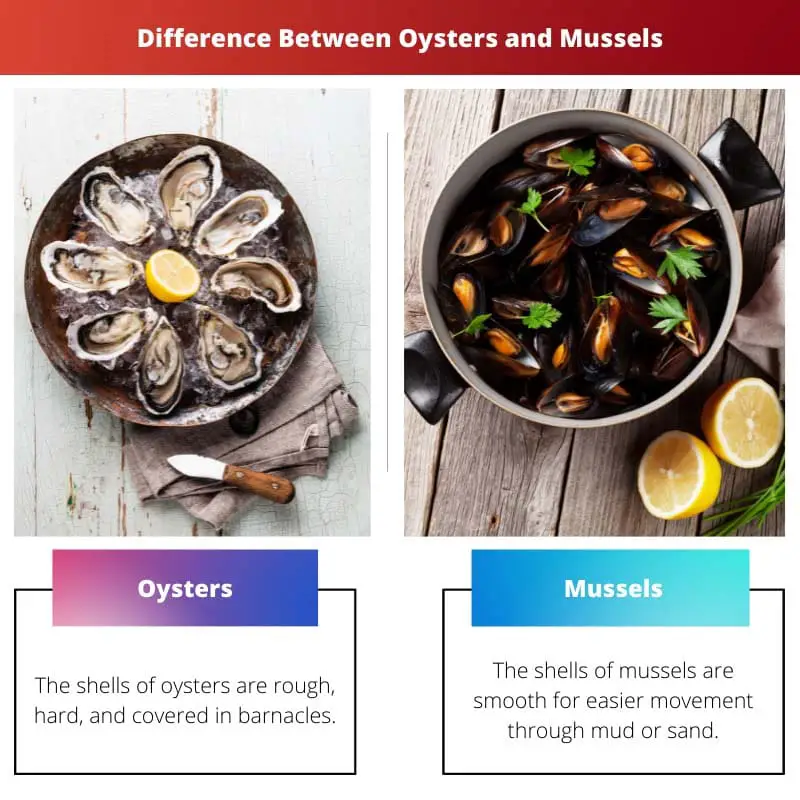Oysters and mussels are shellfish that belong to the family of mollusks. Both animals are farmed or harvested to be eaten as seafood.
Oysters are also known for their ability to produce natural pearls. Mussels can produce pearls as well. However, it is rare for them to do so.
Key Takeaways
- Oysters are bivalve molluscs found in saltwater environments, known for their hard shells and delicate, salty flavor; mussels are also bivalve molluscs found in saltwater and freshwater environments, with a tender texture and sweet, slightly nutty flavor.
- Oysters are consumed raw on the half-shell or cooked in various dishes, including stews and Rockefeller-style preparations; mussels are steamed or boiled and served in various sauces.
- Oysters are considered a luxury food and can be more expensive than mussels; mussels are more widely available and less expensive, making them a popular seafood choice.
Oysters vs Mussels
Oysters and mussels are bivalve mollusks but differ in their shells, habitats, and taste. Oysters tend to have irregular, rough shells and a salty taste, while mussels have elongated, smooth shells and a milder flavor.

The shell of an oyster is oval-shaped. While its inner surface tends to be white, its outer surface may be dark grey, white, blue, purple, or brown.
Comparison Table
| Parameters of Comparison | Oysters | Mussels |
|---|---|---|
| Shape of shell | Oysters have an oval-shaped shell. | Mussels have a thin oblong-shaped shell with elongated ends. |
| Texture of shell | The shells of oysters are rough, hard, and covered in barnacles. | The shells of mussels are smooth for easier movement through mud or sand. |
| Color | The inner surface of an oyster shell is white or pearl-colored, while the outer surface may be dark grey, white, blue, purple, or brown. | The inner surface of a mussel shell is silvery or pearl-colored, while the outer surface can be purplish, black, or brown. |
| Size | Oysters are bigger than mussels. | Mussels are among the smallest of the mollusk family. |
| Living environment | Oysters live in marine (salty) water, which calcifies their shells; however, they may also set up habitat in brackish waters of rivers and seas. | Mussels commonly live under brackish water; they form symbiotic colonies in which these animals depend on each other to survive. |
| Body structure | Oysters tend to be fleshier than mussels. | Mussels have feet, while oysters don’t; however, mussels choose to stay immobile. |
| Uses | Oysters are farmed to be eaten as seafood and also for their pearls; being filter feeders, oysters can filter around five liters of water per day. | Mussels are farmed for food; however, it is rare for them to produce pearls; mussels are known to be a great source of protein. |
| Edible species | Some edible varieties of oysters include dredge oysters, rock oysters, Pacific oysters, Ostrea angst, etc. | Some edible varieties of mussels include Mediterranean mussels, California mussels, Perna Perna, Perna Viridis, etc. |
What are Oysters?
Oysters are bivalve mollusks that mostly live under marine water but are sometimes found in rivers and seas. Their oval-shaped shells are hard, rough, and covered in barnacles.
Oysters have been a food option for people since prehistoric times. Their cultivation is known to have begun from the times of the Roman Empire.
They are considered a delicacy for their wide range of flavor profiles and rich nutrient content. The fertilization of oysters takes place internally.
They self-fertilize and produce millions of eggs in about six hours only. These eggs develop into larvae that attach to a host for survival.
Subsequently, they find a permanent habitat where they can fully mature. Oysters have many varieties and species. Interestingly, their taste depends on the environment that they live in.
Some edible oyster varieties include European flat, Pacific Oyster, Olympia Oyster, Kumamoto, Dredge Oyster, Rock Oyster, etc.

What are Mussels?
Mussels are edible bivalve mollusks that are commonly found in brackish water. They have smooth shells that are oblong-shaped and elongated ends.
The color of their shells tends to be purplish, black, or brown. Mussels commonly grow up as males and end up turning into females.
The fertilization of these shellfish takes place externally. Mussel eggs become larvae and attach themselves to the fins and gills of other fish.
When they grow up, they tend to live in symbiotic colonies where they depend on each other to survive. Mussels fix themselves to rocks and other surfaces using threads called ‘byssal’ threads.
These threads are known to have great strength. Scientists are trying to develop an adhesive from mussels to be used during eye surgery.
There are about 17 species of mussels that are fit for human consumption. Some edible mussel varieties include Blue Mussels, California Mussels, Mediterranean Mussels, Pinna Carnea, Perna Perna, etc.

Main Differences Between Oysters and Mussels
- Oysters have oval-shaped shells that are rough, dull, and covered in barnacles, while mussels have oblong-shaped smooth shells.
- Mussels are purplish-black or brown, while oysters are mostly dark grey, black, white, or brown.
- Oysters tend to be larger than mussels.
- Oysters are found in marine and freshwater, while mussels tend to set up habitats in freshwater more often.
- Oysters tend to be fleshier than mussels.
- Even though both animals are mostly immobile, mussels have feet, while oysters don’t.
- Males and females are separate in the case of oysters, while mussels can be male and female both.









